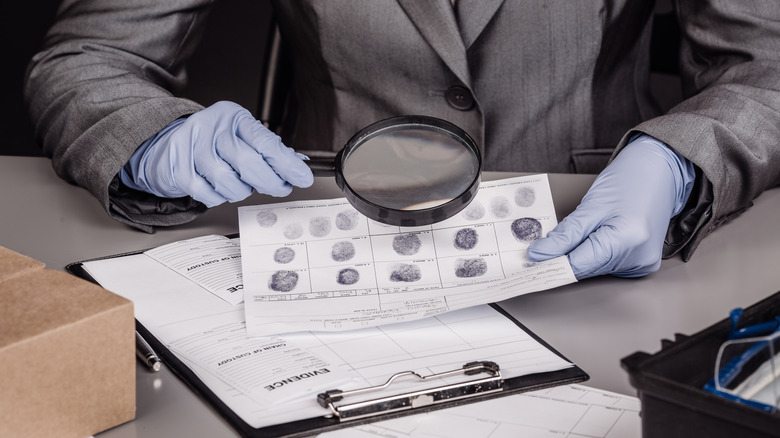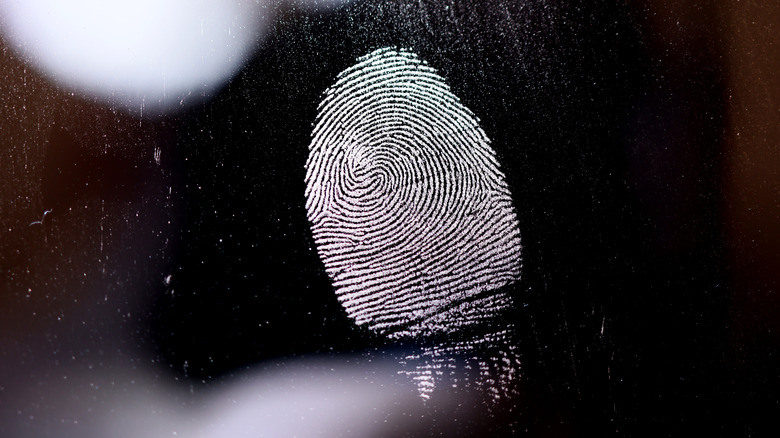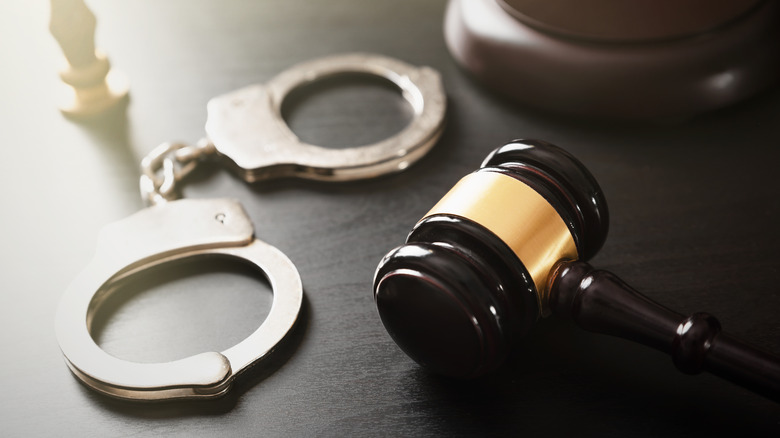The First Time Fingerprints Were Used As Evidence In A Case
No two fingerprints are alike, which is why it's an effective means of identification. According to forensic scientist and fingerprint expert Simona Francese, no two people share the same fingerprints, even identical twins. "The probability of two individuals sharing the same fingerprints is 1 in 64 billion," Francese said, per Live Science. Fingerprints have been used as signatures since ancient times. Back then, finger impressions were used on clay tablets as a form of signature for important transactions between parties.
According to History Daily, it was known as far back as the 14th century that no two fingerprints were alike. However, it wasn't until 1856 that they were used as a form of identification. A British administrator named Sir William Herschel worked in India and required the use of fingerprints as identification on contracts to make them valid. It would be a few decades more when fingerprints were used in court to convict a defendant. In 1910, a man unknowingly left a fingerprint at the scene of the crime, and that served as the main evidence during his trial.
The case of Thomas Jennings
Thomas Jennings had just been released from prison six weeks prior in Joliet, Illinois, when he broke into the Hiller house on September 19, 1910, at about 2 a.m. Inside were Clarence Hiller, his wife, and their children, who were all asleep in bed. As reported by Illinois Courts, Jennings entered the eldest daughter Clarice's bedroom but she woke up and started screaming. Clarence was awakened by Clarice's shouts and immediately rushed to her daughter's room and confronted the intruder.
During the tussle, the two men tumbled down the staircase, and Clarice said she heard three gunshots. The intruder fled, and Clarence was left bleeding to death by the front door of his home. According to Smithsonian Magazine, neighbors were quick to call the police. They apprehended Jennings less than a mile away from the Hiller house. His clothes were bloody and torn, and he had a revolver with him. When authorities inspected the scene of the crime, they discovered that Jennings left his fingerprint on a railing that had just recently been painted. He reportedly held on to it as he pushed himself up to a window. Authorities took photographs of the fingerprint and cut off the railing to preserve it as evidence.
The first use of fingerprints as evidence
The fingerprint on the railing was compared with Thomas Jennings' fingerprints and 33 similar points of identification were seen, as reported by the Chicago Tribune. Fingerprints had never been used in court as evidence in the United States prior to Thomas Jennings' trial, but the judge allowed the prosecution to do so despite the objection of the defendant's attorney.
A newspaper article dated November 6, 1910, from the Chicago Tribune noted that several experts were called to testify in court about the fingerprints. Authorities from Chicago, a U.S. government investigator, and an inspector from Canada attested to the similarities between the fingerprint on the railing and Jennings' fingerprint. A side-by-side comparison was done, and similar areas were pointed out to the jury. The expert testimonies were enough for the jury to convict Jennings. His attorneys appealed the guilty verdict, but the Illinois Supreme Court stood by the conviction and stated, "The courts are justified in admitting this class of evidence." Jennings' appeals were eventually exhausted, and he was sent to the gallows in 1912.


